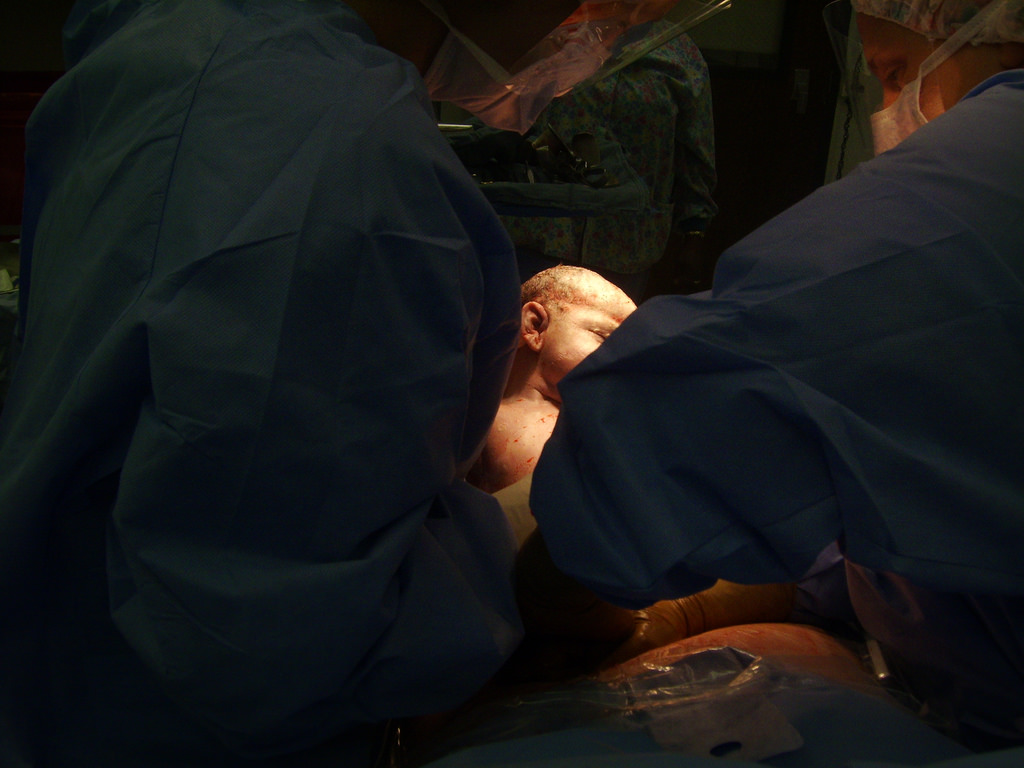A New Influence on Human Evolution: C-Sections

It’s not easy to be born. In contrast to other mammals, humans have relatively large babies with big brains. But, we also walk upright—which creates a puzzle for anthropologists since the shift to bipedalism resulted in smaller pelvises.
Now, a study published today in the Proceedings of the National Academy of Sciences models the way this mismatch happens and points to one factor that has increased the inconvenient disparity between the large size of babies and the relatively narrow pelvises of their mothers.
Mihaela Pavlicev, an evolutionary biologist at the Cincinnati Children’s Hospital Medical Center and a co-author of the study, says that she has never been very convinced by the field’s traditional answer to this apparent contradiction—first proposed by anthropologist Sherwood Washburn in 1960. On one hand, a narrower pelvis makes walking more efficient—and we are walkers—but on the other, bigger baby brains require a wider pelvis to pass through. These two opposing needs make birth more difficult.
“Humans became bipedal much earlier, before their brains became so huge,” Pavlicev says. Bipedalism came along about 4 to 5 million years ago, and brain size started increasing about 2 million years ago. “It is always easy to explain things after the fact, but it’s really hard to know what happens at the origin in evolution, and most traits have more than one constraint.”
In the new study, Pavlicev and an international group of researchers devised a mathematical model that showed that the probability of survival increases with the size of the baby relative to the size of the maternal pelvis—in other words, bigger babies generally have higher survival rates. On the maternal side, narrow pelvises seem to be more advantageous, contributing to the tightness of the canal relative to the baby’s cranium.
However, the fitness in each individual increases only to the point where the baby does not fit through the birth canal anymore. After that, the probability of a baby’s survival declines rapidly under natural conditions. When this relationship between size and survival are placed on a graph, the curve drops off a cliff at a certain point—which shows the “cliff-edged” fitness function, says Philipp Mitteroecker, a theoretical biologist at the University of Vienna who is the lead author of the new paper.
Ironically, cesarean sections may actually be making birth more difficult for everyone—leading to yet more C-sections and more challenges for people who have vaginal births. Based on the model, the researchers were able to estimate the degree to which the use of C-sections, which were developed about 60 years ago, could be affecting the evolutionary selection of both mother and baby.
According to the model, the rates of mismatch between a baby’s size and its mother’s pelvic dimensions, known as fetopelvic disproportion, have risen from a pre-cesarean rate of 3 percent to a current rate of 3.3 to 3.6 percent—a 10–20 percent increase. And the authors note that the mismatch may continue to increase. “It is difficult to judge how much the rate of birth complications has really increased because the rate of C-sections increased much more because of social and other reasons,” Mitteroecker says.
It’s not all that surprising to think that cesarean births are removing one of the constraints on the size of babies, says Karen Rosenberg, a biological anthropologist at the University of Delaware who was not involved in the study.
Rosenberg points out that the skyrocketing rate of C-sections in developed countries (close to half the births in public hospitals in Brazil and around 30 percent of births in the United States) isn’t due to obstructed labor. “There are a lot of things involved in the number of birth difficulties today, like changes in diet and exercise,” she explains, adding that the prevalence of obstructed labor might not have that much to do with the mismatch.
So with the technology for getting babies out of mothers improving all the time, could babies be even larger in the future? Pavlicev says probably not. “One hypothesis is that the mother’s metabolism actually limits the size of the baby because the brains and the growing of the baby is extremely strenuous on mom,” she says. “We humans have very demanding babies.”
































